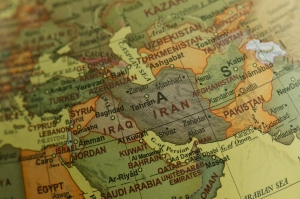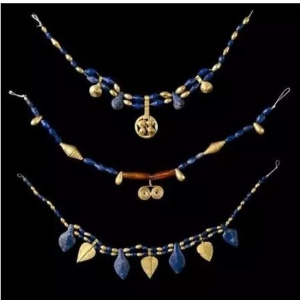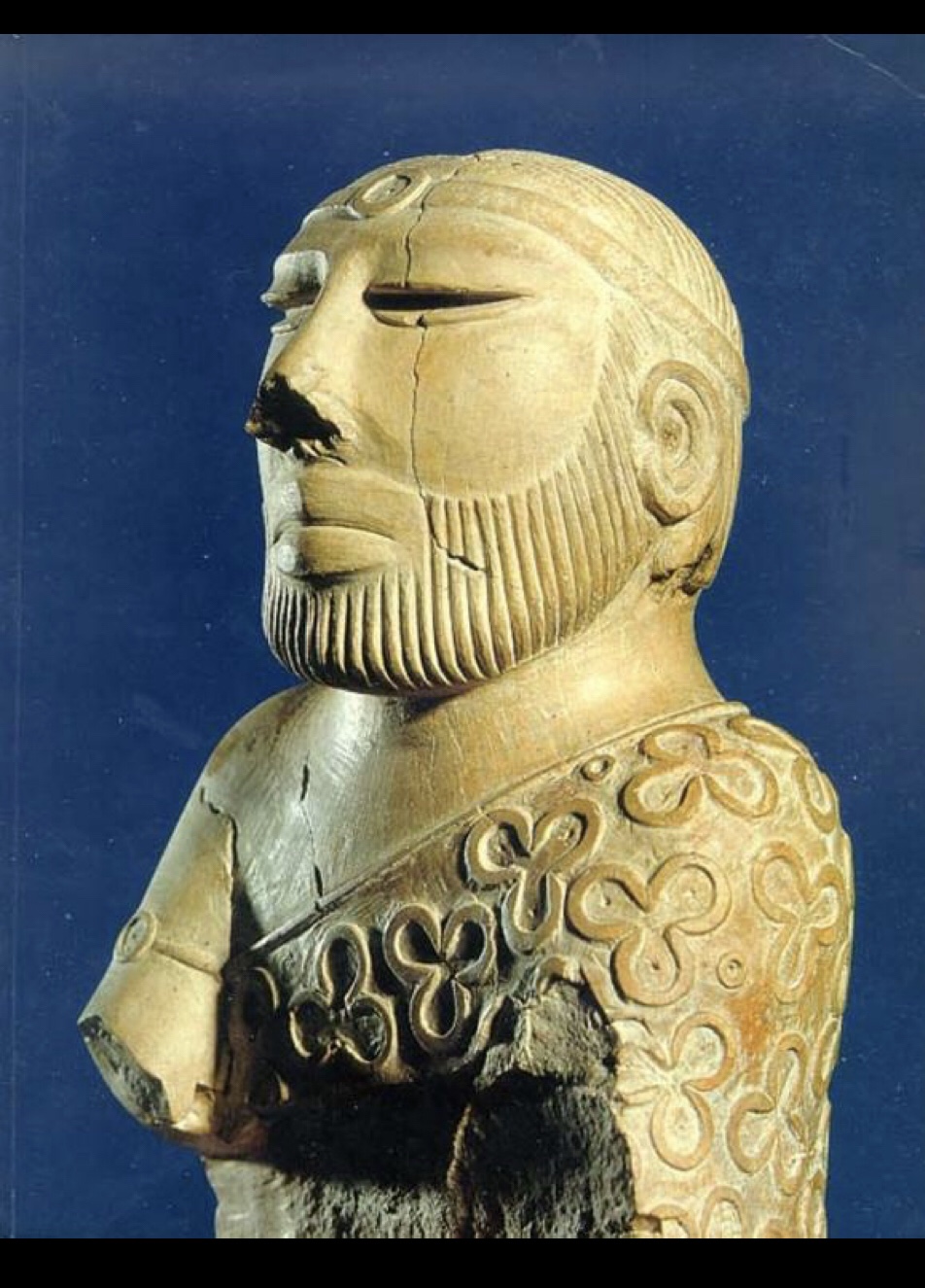
Hi friends! I had a comment on my previous post about fashion history that wanted more details about how fashion was effected by evolving society and geography. Your wish is my command.
Fashion has evolved based on available resources, geographical location, and on how far societal groups had advanced (i.e. from hunter gatherer to cities, etc.). As humans created more advanced societies, technology and clothing became more advanced with them. Each group devised clothing that fit their geographical needs and came from their available resources.
Archeologists and anthropologists have studied a variety of sources to learn about fashion and textile history. These include material remains, writings, representations of textiles and textile manufacturing in art, and the acquisition, use, and trade of fabrics, tools, and completed garments.
The first known clothing was made from skins of animals and leaves of plants which would have been the only resources at the time. These would have been woven or draped. The sewing needle appears about 50,000 years ago in the Denisova Cave in Siberia giving evidence that humans started actually sewing garments together. The earliest dyed flax fibers, found in a prehistoric cave in Georgia, date back to 36,000 years ago giving evidence of dying and cloth making knowledge. Archeologists have found net gauges, spindle needles, and weaving sticks from 5000 BCE which give evidence of evolving textile technology.
It’s thought that felt is the first actual textile used by humans. Felt is made by matting, condensing, and pressing fibers together. It’s often made from wool or animal fur. Nomadic tribes would have used the fur from their flocks or from wild animals to make this fabric. Felt has useful properties that would have helped early mankind such as being fire retardant, dampening sound, and holding large amounts of fluid without feeling wet.
The first known textile of South America was discovered in Guitarrero cave in Peru. It was woven out of vegetable fibers and dates back to 8,000 BCE. Cotton found in Peru dated as far back as 6,000 BCE. Some surviving examples of nalebinding, a textile method similar to crochet and knitting, has been found in Israel and dates back to 6500 BCE. Looms appeared in the Neolithic period which is the final division of the Stone Age. The earliest know woven textiles of the Near East is flax. Evidence exists of flax cultivation from 8,000 BCE whereas the breeding of sheep for fleece in the Near East dates to about 3,000 BCE.
Throughout the Neolithic and Bronze Age the Eurasian Steppe Route provided interaction and trade among nomadic communities. Around 114 BCE, the Han dynasty initiated the Silk Road trade route with routes between China and Asia Minor and the Mediterranean extending over 5000 miles of land and sea. Trade on the Silk Road played a major role in the development of ancient civilizations such as China, Egypt, Mesopotamia, Persia, India, and Rome.

In my fashion history post, I covered mostly Mesopotamia and Egypt. I’ll expand on those here. Ancient Mesopotamia had about ten inches of rain a year and very hot temperatures. However it’s location between the Tigris and Euphrates rivers made it an ideal location for civilizations to flourish. In Mesopotamia, the clothing of a regular Sumerian was very simple, especially in the summer when temperatures were high. The clothes would have been made from animal skins, vegetation, and/or flax cloth. Flax was native to the region and flourished as domesticated crops in the Fertile Crescent (a region spanning modern day Iraq, Syria, Lebanon, Palestine, Israel, Jordan, northern Egypt, the northern region of Kuwait, southeastern region of Turkey, and the western portion of Iran). Flax cloth, also known as linen, was lightweight, strong, absorbent, and dried quickly. White linen also helped to deflect the heat of the sun. Oil could also be derived from flax seeds. In the winter they wore clothes made of sheep fur for warmth. In early depictions, the men often appear half clothed with some kind of short skirt while women had longer skirts or dresses to their ankles. Later on we see depictions of men wearing tunics, coats, and belts. As the craft of wool weaving developed in Mesopotamia, a variety of styles became more common–varied sleeve lengths, tunic lengths, and colors. Dyes would have been made from native plants or bugs. As trade increased, more dyes would become available as well as types of cloth such as cotton and silk. Mesopotamia was a region that was often engaged in warfare as different cultures sought for power. The area saw the rise and fall of cultures such as the Sumerians, Akkadians, Gutians, Babylonians, Hittites, Kassites, Assyrians, Persians, and the Greeks. Each brought their own religion, culture, and technology with them, influencing fashion.

Jewelry was worn by both men and women of ancient Mesopotamia. The most common were multi-strand beads made of carnelian and lapis lazuli, gold earrings, hairbands made of fine gold, anklets, silver hair rings, filigree medallion pendants, signet rings, and amulets. The variety of jewelry tells us of the trade that existed among nations as many of the recourses that the jewelry is made from are not native to the region but rather to neighboring regions.
The climate in ancient Egypt was hot and dry during most of the year with a rainy season during the winter months. The temperatures could drop to freezing at night. The rain was mostly in the northern part, and the civilization of Egypt depended on the annual flooding of the Nile river. Interestingly, between 8500 and 5000 BCE, the northern part of the Sahara had enough rain to become a Savannah. By the 6th millennia BCE, the landscape started changing becoming more arid. By 2000 BCE the Sahara was as dry as it it now. The ancient Egyptians had to adapt to the climate change and began to settle more closely to the Nile on a permanent basis rather than on a seasonal one. This transition can be seen by the development of upper and lower Egypt. Most people think of Egypt in its golden age of influence, but that didn’t really happen until Egypt was united by pharaoh Narmer (or Hor-aha) in 3100 BCE. Nevertheless, Egypt still played a large role in textile history even before becoming united. In Egypt, evidence of linen production is found as early as 5500 BCE. Cultivation of flax is found as early as 6000 BCE. Other baste fibers such as rush, reed, palm, and papyrus were used alone or with linen to make rope or other textiles. Linen was prized by the Egyptians for the same reason as the people of Mesopotamia. There isn’t much evidence of wool production during the Neolithic period. This could be due to religious attitudes towards animals. Various spinning and weaving techniques evolved making Egypt a leader in textiles as trade flourished. Dyes date back to around 3000 BCE and were made from natural ingredients such as saffron, ocher, indigo, and flowers. It’s thought that India was the leader in dyes and as trade flourished, their knowledge spread to surrounding civilizations, including Egypt. Indigo, a native to India, was found in Egypt dating about 2500 BCE which supports this theory. With each occupation of conquering civilizations during the last millennia BCE, the textile industry adapts to reflect the new influences. The arrival of the Persians, Syrians, Greeks, and Romans brought cotton, wool, and silk to Egypt. It also brought different religions and types of government which influenced fashion.
In depictions of clothing, we often see the cloth tied in knots or secured with pins. This could have been a way to keep their clothes versatile rather than sewing a permanent seam which would limit their options. Cloth took longer to make and was more expensive to buy since everything was handmade. Men generally wore kilts/skirts and women wore narrow dresses with various forms of shirts or jackets. Tunics were common. Linen was available for all social classes, but the type of weaving differed as well as the amount of ornamentation that the person wore. The classic shear look that Egypt is known for would have been reserved for the upper classes and for religious leaders. Certain ornaments or crowns were specific to royalty, but most fashion elements were for all if they could afford it.

Egyptians, both male and female, wore necklaces, bracelets, heavy neck collars, pendants, earrings, rings, and special buttons on their clothing. Wealthy Egyptians had jewelry made out of precious jewels and gold including carnelian, turquoise, and lapis lazuli which were sourced locally. The common people couldn’t afford these luxuries, so they wore jewelry made out of colored beads. For the wealthy, beads were made from jewels, precious metals, and glass. For the poor, they were made from painted clay, stones, shells, animal teeth, and bones. Flint jewelry was also common as it was native to the region. Foreign influence is seen in the 18th dynasty by proof of imported jewels and a styled headdress. The Greeks conquered soon after.


I’m going to add a bit about India here as well. Not much is known about ancient Indian fabrics before 5000 BCE. They probably made use of animal skins and vegetation, same as everyone else. The Indus Valley civilization flourished from about 2500 BCE to about 1900 BCE when a drought caused separation of the civilization into smaller units. This eventually lead to the development of the caste system. Like the other regions, India was often in a state of war, being conquered by one nation after another among which was the Gupta empire. Under this empire, India enjoyed its golden age. Evidence suggests the Indus people made use of cotton, jewelry, and made dyes from native plants with indigo being a popular color. Terracotta figurines show floral patterns and a turban as well. Cotton cultivation was found in Mehrgarh as early as 5000 BCE and in the Indus Valley as early as 3000 BCE. In the first millennia BCE Greek historians talk of the cotton, patterns, and colors used in India. India played a large role in the spread of cotton and dyes to the rest of the Middle East as well as Asia and Europe.

Worn by both men and women, gold, silver, copper, and a lot of gemstones were used in Ancient Indian Jewellery. Gemstones such as carnelian, agate, lapis lazuli, amethyst, garnet, coral, rubies, sapphires, topaz, diamonds, and cat’s eye were common. India was home to various precious resources such as these and was the world’s most prominent supplier. Indian jewelry was and is very symbolic, and jewelry was made for many parts of the body.
From the beginning of time, people have wanted to look and feel beautiful. They’ve wanted to show their own sense of style. While fashion started out as practical by necessity, people still found a way to show their own style where they could. Fashion was also used to portray social class as well as for religious purposes. These ancient cultures were polytheistic, worshiping thousands of gods. Religion could be seen in the patterns on their clothes, the way they wore their clothes, and in their jewelry. Depictions of the gods were common as well as amulets or charms to ward off evil or to bring good tidings. Like today, ancient civilizations had trend setters. These were usually their leaders, whether they be religious or governmental.
To understand changes in fashion, you have to look at what’s happening to the people and their geographical area at the time of the changes. Was there enough rain that year? What resources are native to the area? What technology did they have? Were they at war? Were they conquered by a foreign power? Did they adopt a new religion? Did they enjoy the arts or philosophy? Did they have more interaction with other cultures? Because our knowledge of ancient cultures is so limited, our knowledge of fashion history is limited as well.
That said, my post today is not all inclusive but, rather, a brief summary of these regions. It would be a very long post otherwise and require a lot more research. My husband keeps interrupting me. Something tells me he wants some attention. 🙂
To my commenter: this might not answer all your questions, but I hope it helps.
Thanks for reading! XOXO!
Sources:
Tortora, Phillip “Survey of Historic Costume” 6th edition. Fairchilds book 2015. Print.
https://www.britishmuseum.org/collection
https://www.thebetterindia.com/86147/history-indian-jewellery-jewels-traditions/amp/
https://en.m.wikipedia.org/wiki/History_of_India
http://sumerianshakespeare.com/117701/118101.html
https://allmesopotamia.wordpress.com/2012/07/24/dissecting-mesopotamian-jewelry/amp/
https://blogofart.com/art/ancient-mesopotamian-jewelry/
https://www.durangosilver.com/egyptian-turquoise.html
https://www.britannica.com/art/jewelry/Egyptian
https://casorojewelrysafes.com/fashion-and-jewelry-in-ancient-egypt/
https://en.m.wikipedia.org/wiki/Fertile_Crescent
https://www.agmrc.org/commodities-products/grains-oilseeds/flax-profile
https://en.m.wikipedia.org/wiki/Linen
https://en.m.wikipedia.org/wiki/Prehistoric_Egypt
https://factsanddetails.com/world/cat56/sub364/entry-6158.html
https://sciencing.com/temperature-climate-ancient-mesopotamia-9330.html
https://www.history.com/.amp/topics/ancient-middle-east/mesopotamia
https://www.zum.de/whkmla/sp/1011/ignoramus/igno2.html#III1
https://en.m.wikipedia.org/wiki/History_of_clothing_and_textiles



Love it! I look forward to similar posts in the future! Always intriguing to see how the historical factors in play influence development and the evidence of such influences displayed in fashion is so fun to see
LikeLiked by 1 person
Finally read this post. This is a truly remarkable overview! I love digging into ancient civilizations and the roots of all our customs. Nicely done!
LikeLiked by 1 person
Thanks. I find it fascinating!
LikeLike